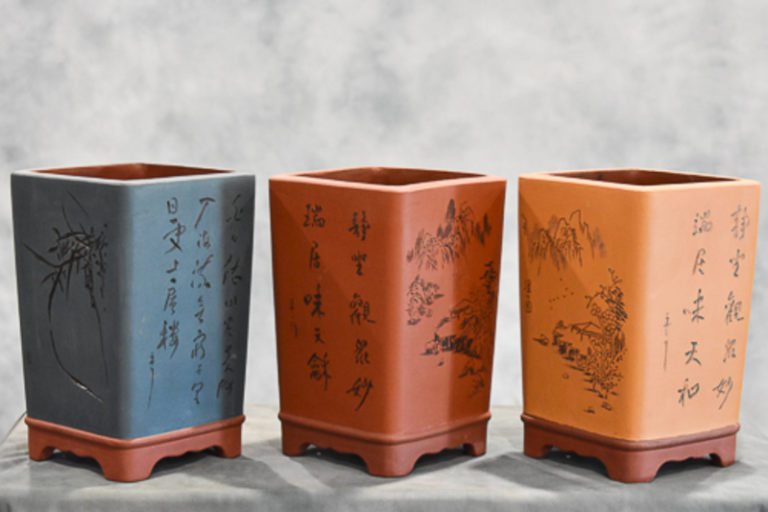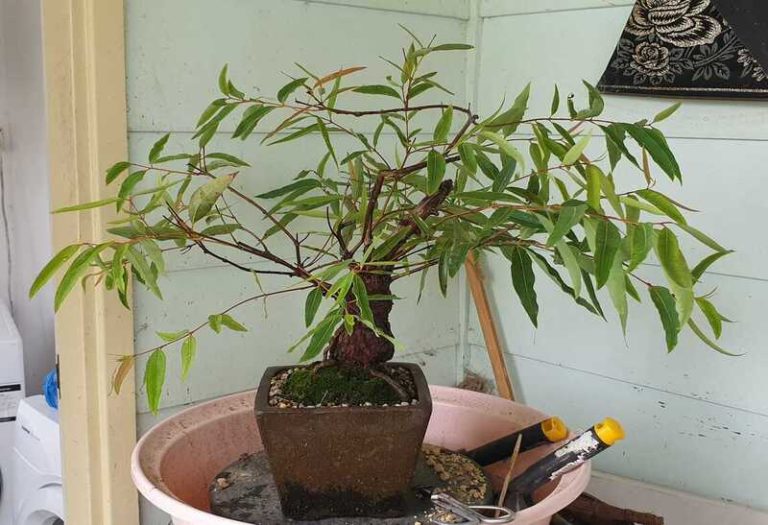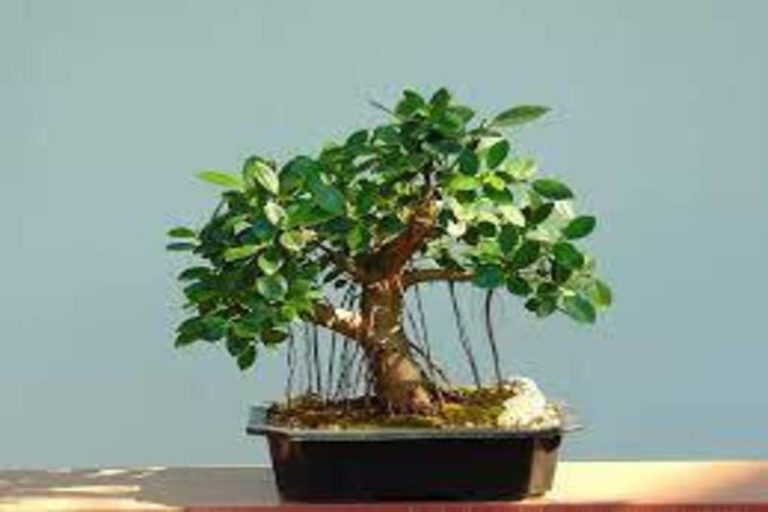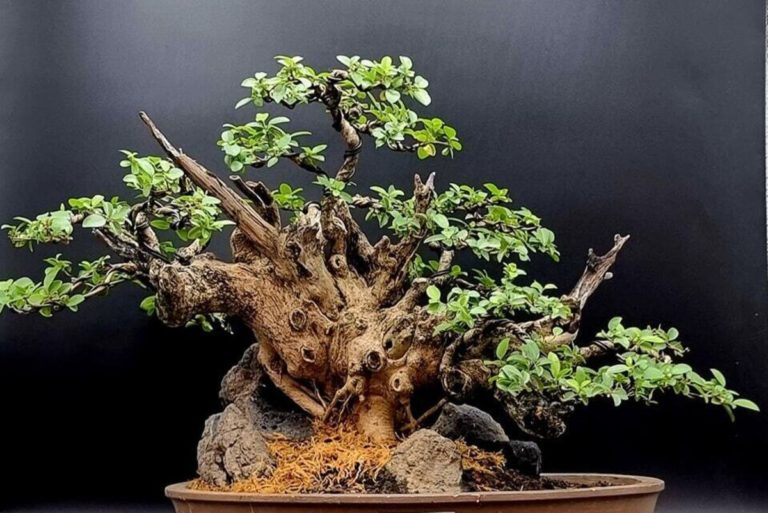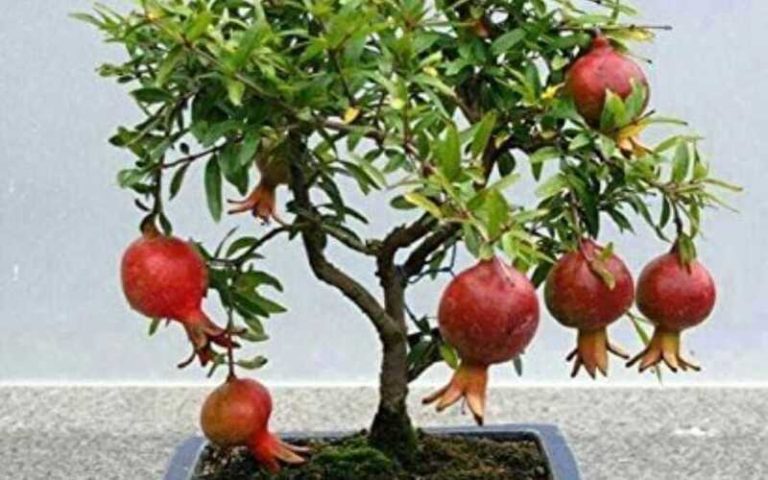Pinus Nigra Bonsai: A Timeless Expression of Natural Grace
Welcome to the interesting world of Pinus nigra bonsai! If you are serious about gardening and enjoy the art of bonsai, you are in for a treat. In this piece, we will talk about the beauty and charm of Pinus nigra bonsai and give you simple, easy-to-understand tips on how to grow and care for these small pine trees.
What is a Pinus Nigra Bonsai?
Pinus nigra bonsai is the practice of cultivating and shaping miniature versions of the Pinus nigra tree through the art of bonsai. It involves carefully pruning, wiring, and styling the tree to create a small and aesthetically pleasing representation of the full-sized Pinus nigra tree. The bonsai captures the characteristic features of the species, such as its dark green needles and rugged bark. Pinus nigra bonsai can be displayed indoors or outdoors and requires dedicated care and maintenance to ensure its health and beauty.
History and Origins of the Pinus Nigra Bonsai
The background and roots of Pinus nigra bonsai can be traced back to the old art of bonsai itself. Bonsai started in China over a thousand years ago and grew in Japan. It is the art of growing and shaping small trees in pots in a way that looks good.
Bonsai slowly spread to other parts of the world, like Europe, where different kinds of trees were trained to look like bonsai plants. Bonsai fans have become interested in species like Pinus nigra, which is also known as Austrian pine.
Pinus nigra is native to parts of Europe, like the Balkans and the Mediterranean. It is good for growing as a bonsai because of things like its dark green leaves, rough bark, and ability to handle being trimmed and shaped. The tree is a great choice for bonsai artists because it is small and has nice features.
As the practice of bonsai became more well-known worldwide, enthusiasts and artists started to grow and shape Pinus nigra as bonsai trees. The tree’s resilience, adaptability, and aesthetic appeal contributed to its recognition and incorporation into the bonsai repertoire.
Today, Pinus nigra bonsai remains popular and practiced by bonsai enthusiasts all over the world. It showcases the beauty of this species in miniature form, allowing individuals to connect with nature and express their creativity through the art of bonsai.
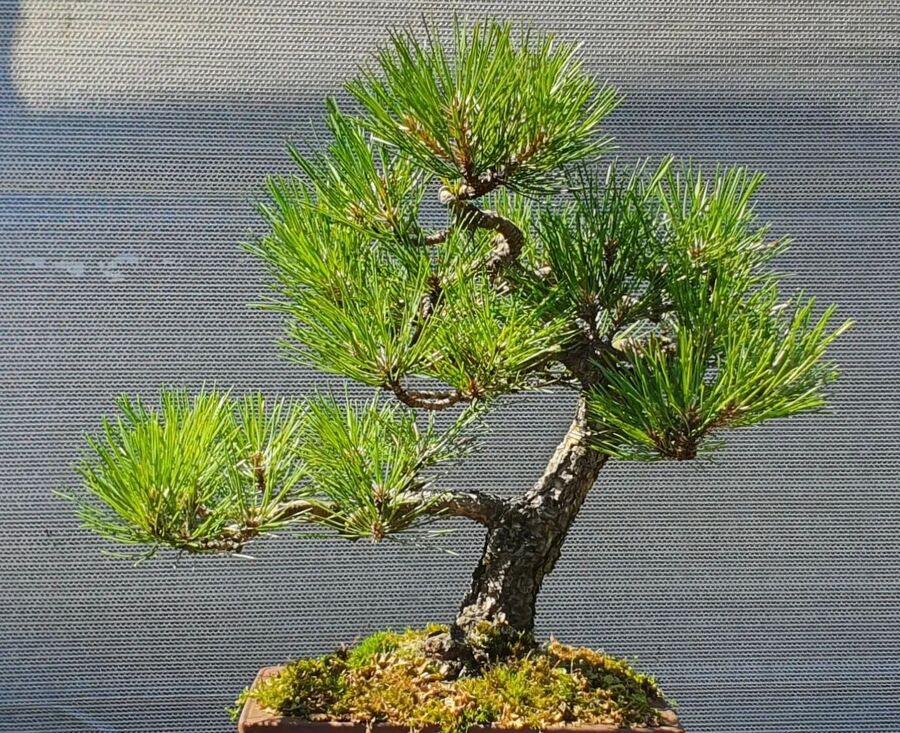
Types of Pinus Nigra Bonsai
There are several different types or styles of Pinus nigra bonsai that bonsai enthusiasts can explore and create. Each style emphasizes specific characteristics and aesthetic elements of the tree, resulting in distinct visual presentations. Here are some common types of Pinus nigra bonsai:
1. Formal Upright (Chokkan): This style features a straight and upright trunk, gradually tapering towards the apex. The branches are evenly distributed, following a structured and symmetrical pattern.
2. Informal Upright (Moyogi): In this style, the trunk exhibits some gentle curves and movement, giving it a more organic and natural appearance. The branches are irregularly positioned, reflecting the asymmetric growth patterns of trees in nature.
3. Shakan (slanting): This design depicts a trunk that is inclined or slanted, giving the impression that strong winds or other natural forces have shaped it. The branches follow the slant of the trunk, creating a dynamic and visually appealing composition.
4. Cascade (Kengai): This style mimics trees growing on slopes or cliffs, with the trunk cascading downward beyond the edge of the container. The branches extend upward and outward, creating a sense of drama and movement.
5. Semi-Cascade (Han-Kengai): Similar to the cascade style, the semi-cascade style features a trunk that bends downward, but not as dramatically as in the cascade style. The branches extend upward and outward, balancing the overall composition.
6. Literati (Bunjin): The literati style aims to capture the essence of old, windswept trees found in nature. The trunk often exhibits twisting and contorted forms, with branches irregularly positioned to create a sense of age and character.
These are just a few examples of how Pinus nigra bonsai can be done in different ways. Each style is a different way to understand and create art, giving bonsai fans a chance to show off their creativity and love for the natural beauty of Pinus nigra.
Pinus Nigra Bonsai and its Symbolism
Pinus nigra bonsai, like many other bonsai trees, holds symbolism and meaning beyond its physical beauty. Here are some symbolic associations often attributed to Pinus nigra bonsai:
Endurance and Resilience: A Pinus nigra tree shows how strong and tough nature is. The fact that the tree can stand up to difficult conditions, like drought and strong winds, shows that it is strong and can handle problems. It’s a good lesson of how important it is to keep going in life.
Longevity and Wisdom: Bonsai, including Pinus nigra bonsai, are often associated with longevity and wisdom. The slow growth and the ability of bonsai trees to live for many years serve as symbols of longevity. Additionally, the art of cultivating and shaping bonsai requires patience, knowledge, and understanding of the tree, representing wisdom and a deep connection with nature.
Harmony and Balance: A well-made Pinus nigra bonsai has a balanced and visually pleasing shape that stands for unity and balance. The way the stems, leaves, and general structure are put together shows how well people and nature get along. It reminds us of how important it is to find balance in our own lives and keep the world in balance.
Connection with Nature: As with any bonsai tree, Pinus nigra bonsai serves as a link between humans and nature. It brings a little bit of nature into our homes, enabling us to enjoy the beauty and tranquillity of trees on a smaller scale. It represents our connection to nature and acts as a reminder to treasure and safeguard the environment.
Patience and Contemplation: Growing and shaping a Pinus nigra bonsai requires patience and contemplation. The slow growth and the deliberate care given to the tree teach us the value of patience and the rewards that come from nurturing something over time. It encourages us to slow down, reflect, and appreciate the beauty of nature in our busy lives.
Pinus nigra bonsai holds personal meanings and interpretations as well, varying from individual to individual. The symbolism and significance of a bonsai tree can be deeply personal, representing specific values, memories, or aspirations. Ultimately, Pinus nigra bonsai serves as a meaningful and symbolic art form that allows us to connect with nature, cultivate patience, and find balance in our lives.
Characteristics of the Pinus Nigra Bonsai
Pinus nigra bonsai possesses a range of characteristics that contribute to its overall beauty and appeal. Here are some key characteristics of Pinus nigra bonsai:
- Needle-like Foliage: Pinus nigra bonsai showcases dark green, needle-like foliage that is typical of pine trees. The needles are arranged in clusters and provide an elegant and distinctive appearance to the bonsai.
- Rugged Bark: The bark of Pinus nigra bonsai is rough and textured, featuring deep furrows and fissures. This rugged bark adds visual interest and creates a sense of maturity and strength in the tree’s appearance.
- Compact Size: Pinus nigra bonsai is cultivated and shaped to be small in size, making it suitable for indoor or outdoor display in limited spaces. Its compact form allows for easier management and maintenance.
- Tapered Trunk: The trunk of Pinus nigra bonsai typically exhibits a gradual taper from the base to the apex. This tapering effect creates a sense of visual balance and contributes to the overall aesthetic appeal of the bonsai.
- Branch Structure: Pinus nigra bonsai displays well-defined branches that radiate outward from the trunk. The branches are often carefully arranged to achieve a balanced and natural-looking silhouette.
- Nebari (Root Flare): Nebari refers to the visible part of the root system that emerges from the soil surface. Pinus nigra bonsai can have nebari, which adds visual interest and stability to the tree’s overall composition. A well-developed nebari enhances the aesthetic value of the bonsai.
- Jin (Deadwood): In some Pinus nigra bonsai, deadwood features called jin can be intentionally created. Jin represents dead or aged wood that is stripped and preserved to add character and a sense of history to the tree. These jin features give the bonsai a weathered and aged appearance.
- Cones: Pinus nigra bonsai can occasionally produce small cones, which are miniature versions of the cones found on full-sized pine trees. These cones add an extra element of realism and natural beauty to the bonsai.
These characteristics, when carefully considered and incorporated in the design and care of Pinus nigra bonsai, contribute to the creation of a visually captivating and artistically expressive miniature tree.
How to Grow a Pinus Nigra Bonsai
Growing a Pinus nigra bonsai necessitates close attention to its special requirements as well as the use of suitable growth techniques. Here’s how to cultivate a Pinus nigra bonsai step by step:
Selection of the Tree: Start by obtaining a healthy Pinus nigra sapling or nursery-grown tree. Look for a tree with a strong and straight trunk, healthy foliage, and well-distributed branches. Consider the tree’s overall shape and potential for bonsai styling.
Potting and Soil: Choose an appropriate bonsai pot or container that provides adequate drainage holes. Use a well-draining bonsai soil mix that consists of a combination of akadama, pumice, and lava rock. This soil mix allows for proper drainage and root aeration.
Pruning and Shaping: Prune your Pinus nigra bonsai regularly to maintain its desired shape and size. Begin by removing any dead, damaged, or crossing branches. Consider the bonsai style you want to achieve and prune accordingly, promoting balanced branch distribution and an appealing silhouette.
Wiring and Styling: Wiring can be used to route branches to their proper destinations. Take care not to put too much pressure on the branches, since this might damage or break them. Allow the wire to establish the suitable shape on the tree before removing it before it burrows into the bark.
Watering: The soil for Pinus nigra bonsai should be mildly saturated. When the upper layer of soil begins to dry out, irrigate your bonsai thoroughly, ensuring that the water reaches the roots. Overwatering can result in root decay, so avoid doing so. Adapt the frequency of irrigation according to the season and weather.
Fertilization: Apply a balanced, slow-release bonsai fertilizer during the growing season to provide essential nutrients to your Pinus nigra bonsai. Follow the manufacturer’s instructions for the appropriate dosage and frequency. Reduce or stop fertilization during the winter dormancy period.
Sunlight and Temperature: Pinus nigra bonsai do best in settings with full sun to some shade. Put your bonsai where it will get at least 6 hours of straight sunshine every day. Keep the tree safe from big changes in temperature, which can be bad for its health.
Protection from Pests and Diseases: Regularly inspect your Pinus nigra bonsai for pests such as aphids, spider mites, or scale insects. Treat any infestations promptly using appropriate insecticides or organic remedies. Monitor the tree for signs of diseases such as fungal infections or needle blight and take appropriate measures to control them.
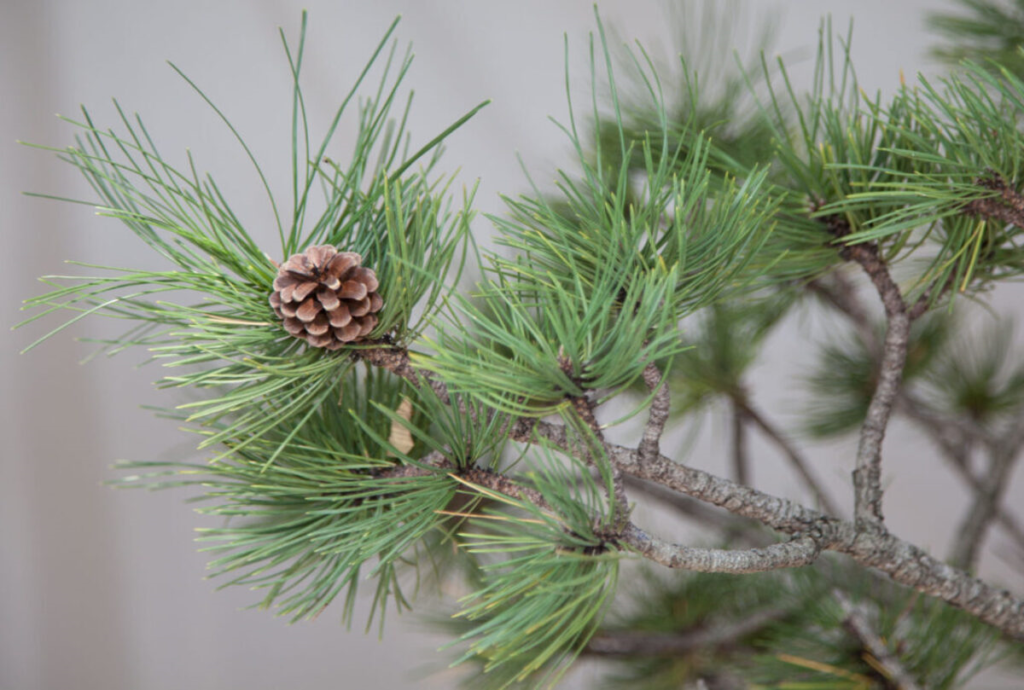
Repotting: Repot your Pinus nigra bonsai every two to three years, preferably in early spring before the growth season begins. Trim back the roots during repotting to maintain a compact root system. Use fresh bonsai soil during repotting to provide optimal nutrition and drainage.
Maintenance and Care: Regularly observe and monitor your Pinus nigra bonsai for any signs of stress, nutrient deficiencies, or overgrowth. Adjust your care routine as needed, including watering, pruning, wiring, and fertilization, to ensure the overall health and vitality of the tree.
Growing a Pinus nigra bonsai requires patience, skill, and dedication. As you nurture and care for your bonsai, you will witness its transformation into a beautiful and captivating miniature representation of the majestic Pinus nigra tree.
Benefits of the Pinus Nigra Bonsai
The cultivation and appreciation of Pinus nigra bonsai offer several benefits, both aesthetic and personal. Here are some of the benefits of having a Pinus nigra bonsai:
1. Aesthetic Beauty: Pinus nigra bonsai brings the beauty of nature into your living space. Its compact size and intricate form allow you to enjoy the elegance and charm of a mature pine tree in a miniature version. The dark green needles, rugged bark, and well-defined branches create a visually captivating and artistically pleasing bonsai.
2. Stress Relief and Relaxation: Taking care of a Pinus nigra bonsai can be a therapeutic and calming activity. The process of watering, pruning, and shaping the tree allows you to connect with nature and find solace in the art of bonsai. It provides an escape from the stresses of everyday life and promotes relaxation and mindfulness.
3. Connection with Nature: Making a bonsai of a Pinus nigra tree might make one feel closer to nature. Caring for a real tree teaches you responsibility and respect for nature. As a constant reminder of nature’s splendor and power, it inspires environmentally conscious behavior.
4. Creativity and Artistic Expression: Growing and styling a Pinus nigra bonsai allows you to express your creativity and artistic flair. The process of shaping and pruning the tree provides an outlet for self-expression and the opportunity to create a unique and personalized bonsai. Each bonsai becomes a reflection of your vision and artistic sensibilities.
5. Learning and Personal Growth: Growing a Pinus nigra bonsai necessitates learning horticulture and bonsai methods. As you examine the tree’s development patterns, perfect your trimming skills, and deepen your grasp of the art of bonsai, it provides a chance for ongoing learning and personal growth.
6. Conversation Starter and Decorative Element: Pinus nigra bonsai can serve as a conversation starter and a focal point in your home or garden. Its unique and eye-catching appearance often attracts attention and sparks discussions about the art of bonsai, nature, and gardening.
7. Sense of Achievement: Nurturing and witnessing the growth and development of a Pinus nigra bonsai can provide a sense of accomplishment and pride. As you witness the tree thrive under your care and observe its progress over time, you experience the satisfaction of nurturing a living work of art.
Pinus nigra bonsai offers a range of benefits, both in terms of its visual appeal and the personal fulfillment it brings. By immersing yourself in the art of bonsai and connecting with the natural world, you can experience the joy and rewards of cultivating and appreciating this miniature representation of the majestic Pinus nigra tree.
Styling and Design of the Pinus Nigra Bonsai
The styling and design of Pinus nigra bonsai involve shaping the tree in a way that accentuates its natural beauty and creates a visually appealing composition. Here are some considerations and techniques for styling and designing a Pinus nigra bonsai:
Trunk Selection: Choose a Pinus nigra bonsai with a desirable trunk shape and size. Look for a straight or slightly curved trunk that tapers gradually towards the apex. The trunk should exhibit movement and character, reflecting the age and growth of the tree.
Branch Placement: Consider the desired bonsai style and balance when positioning the branches. Aim for a well-distributed branch structure that complements the trunk’s movement. Avoid branches that cross or compete with each other, as this can disrupt the overall harmony of the design.
Pruning: Prune the branches to enhance the overall form and silhouette of the Pinus nigra bonsai. Remove any dead, damaged, or excessively long branches. Pay attention to the natural growth patterns of the tree and maintain a balanced distribution of branches throughout the bonsai.
Wiring: Wiring is a technique used to guide the branches into desired positions. Use aluminum or copper wire of an appropriate thickness, taking care not to damage the delicate bark. Gently wrap the wire around the branch, following its natural curvature, and secure it to the trunk or other branches. Wiring should be done during the tree’s active growth period, usually in the spring or early summer.
Styling Techniques: Pinus nigra bonsai can be styled using various techniques, such as:
Jin: Create deadwood features known as jin by stripping and preserving selected branches or sections of the trunk. Jin adds character and a sense of age to the bonsai.
Shari: Shari refers to the creation of a vertical deadwood strip along the trunk. It mimics natural processes like lightning strikes or bark decay and adds visual interest.
Branch Placement: Arrange the branches at various angles to create depth and perspective. To obtain a realistic and visually acceptable arrangement, place the lower branches slightly lower than the middle branches and the upper branches somewhat higher.
Pot Selection: Choose a bonsai pot that complements the overall design and size of your Pinus nigra bonsai. Consider the color, shape, and texture of the pot, ensuring it enhances the tree’s aesthetics without overpowering them. Select a pot that allows for proper drainage and has appropriate proportions for the bonsai’s size.
Regular Maintenance: To maintain the styling and design of the Pinus nigra bonsai, regular maintenance is necessary. This includes periodic pruning to control growth, wiring adjustments as the branches thicken, and repotting to refresh the soil and root system.
Remember that styling and design are subjective, and personal preferences play a role in creating a unique and visually pleasing Pinus nigra bonsai. It’s important to study the natural growth habits of the species and experiment with different styling techniques to develop your own artistic vision for the bonsai.
How to Care for and Maintain Pinus Nigra Bonsai
Caring for and maintaining a Pinus nigra bonsai requires attention to its specific needs to ensure its health and vitality. Here are some essential care guidelines for Pinus nigra bonsai:
- Sunlight: Pinus nigra bonsai grows best in full sun to light shade. Place your bonsai in a location that gets at least 6 hours of direct sunshine every day. This contributes to healthy growth and development.
- Watering: Proper watering is crucial for the well-being of your Pinus nigra bonsai. Water the tree thoroughly when the top layer of soil starts to dry out. Ensure that the water penetrates the soil and reaches the roots. Avoid overwatering, as it can lead to root rot. Adjust the frequency of watering based on the season and weather conditions.
- Fertilization: Pinus nigra bonsai benefit from regular fertilization to provide essential nutrients. Use a balanced, slow-release bonsai fertilizer during the growing season, typically from spring to autumn. Follow the manufacturer’s instructions for the appropriate dosage and frequency. Reduce or stop fertilization during the winter dormancy period.
- Pruning: Regular pruning helps maintain the shape and size of your Pinus nigra bonsai. Remove any dead, damaged, or overgrown branches. Prune with care to maintain a balanced distribution of branches and a natural-looking silhouette. Pruning is typically done during the dormant season or in the early spring before the growth period begins.
- Wiring: Wiring is a technique used to shape and position branches. Apply aluminum or copper wire of an appropriate thickness to guide the branches into the desired positions. Be cautious not to wrap the wire too tightly, as it can damage the delicate bark. Monitor the wiring regularly to avoid the wire cutting into the branches, and remove the wire once it sets the desired shape.
- Protection from Extreme Conditions: Pinus nigra bonsai can tolerate cold temperatures but may need protection from extreme winter conditions, especially when temperatures drop significantly. Place the bonsai in a sheltered location or use protective coverings to shield it from freezing temperatures and strong winds.
- Pest and Disease Control: Regularly inspect your Pinus nigra bonsai for pests such as aphids, spider mites, or scale insects. Treat any infestations promptly using appropriate insecticides or organic remedies. Monitor the tree for signs of diseases such as fungal infections or needle blight and take appropriate measures to control them.
- Repotting: Pinus nigra bonsai should be repotted every two to three years, typically in early spring before the growth season begins. Trim back the roots during repotting to maintain a compact root system. Use fresh bonsai soil to provide optimal nutrition and drainage. The repotting interval may vary depending on the tree’s growth and root development.
- Seasonal Care: Adjust your care routine based on the changing seasons. Provide protection from extreme heat or cold, adjust watering frequency, and consider the tree’s dormancy period during the winter. Observe your Pinus nigra bonsai closely and make adjustments to its care as needed.
- Regular Observation and Maintenance: Regularly observe your Pinus nigra bonsai for signs of stress, nutrient deficiencies, or overgrowth. Check the soil moisture level, inspect for pest or disease issues, and ensure the branches are properly wired. Make the necessary adjustments and provide the required care to maintain the health and appearance of your bonsai.
By providing proper care and maintenance, you can ensure the long-term health and beauty of your Pinus nigra bonsai. Remember to develop a regular care routine, observe the tree closely, and adjust your practices based on its specific needs. With time and attention, your Pinus nigra bonsai will thrive and bring you joy for years to come.
Pinus Nigra Bonsai Care sheet
| Aspect | Care Tips |
| Watering | Water thoroughly when the top layer of soil starts to dry out. Avoid overwatering to prevent root rot. |
| Sunlight | Place in a location that receives at least 6 hours of direct sunlight daily. Provide partial shade during extreme heat. |
| Fertilization | Apply a balanced, slow-release bonsai fertilizer during the growing season. Follow manufacturer’s instructions for dosage and frequency. |
| Pruning | Regularly prune to maintain shape and remove dead or damaged branches. Maintain a balanced branch structure. |
| Wiring | Use appropriate thickness of wire to shape branches without damaging the bark. Monitor wire to prevent cutting into branches. |
| Protection from Extreme Conditions | Shield from freezing temperatures and strong winds during winter. Provide shade during extreme heat. |
| Pest and Disease Control | Regularly inspect for pests and treat with appropriate insecticides. Monitor for diseases and take necessary measures to control them. |
| Repotting | Repot every 2-3 years to refresh soil and maintain a healthy root system. Trim back roots during repotting. |
| Seasonal Care | Adjust care routine based on changing seasons, including watering and protection from extreme weather. Consider dormancy period. |
| Regular Observation and Maintenance | Observe for signs of stress, nutrient deficiencies, or pests/diseases. Make necessary adjustments and provide proper care. |
Use this care sheet table as a reference to ensure you provide the necessary care and attention to your Pinus nigra bonsai. Remember that individual bonsai trees may have specific care requirements, so closely monitor your bonsai’s health and adjust your care routine accordingly.
Conclusion
Pinus nigra bonsai offers a rewarding and fulfilling experience for gardening enthusiasts. By following the simple steps outlined in this guide, you can embark on your own bonsai journey and create a captivating miniature pine tree. Remember to enjoy the process, be patient, and continue learning as you refine your skills. So why wait? Start growing your own Pinus nigra bonsai today and witness the beauty of nature in your very own living masterpiece.
FAQ:
Q: What is Pinus Nigra Bonsai?
A: Pinus nigra bonsai is a miniature version of the Pinus nigra tree, commonly known as Austrian pine. It is a popular bonsai species known for its dark green needles, rugged bark, and compact size. Pinus nigra bonsai is cultivated and styled to resemble a mature pine tree in a small and aesthetically pleasing form.
Q: How long does it take for a Pinus Nigra Bonsai to mature?
A: It takes several years of cultivation and training.
Q: What are the ideal growing conditions for Pinus Nigra Bonsai?
A: Well-draining soil, full sun to partial shade, regular watering, and proper fertilization.
Q: Can Pinus Nigra Bonsai be kept indoors?
A: It is primarily an outdoor tree but can be temporarily displayed indoors.
Q: How often should Pinus Nigra Bonsai be pruned?
A: Prune once or twice a year, typically in early spring.
Q: Can Pinus Nigra Bonsai be grown from seeds?
A: Yes, but it takes longer compared to starting with pre-existing material.
Also Read:



